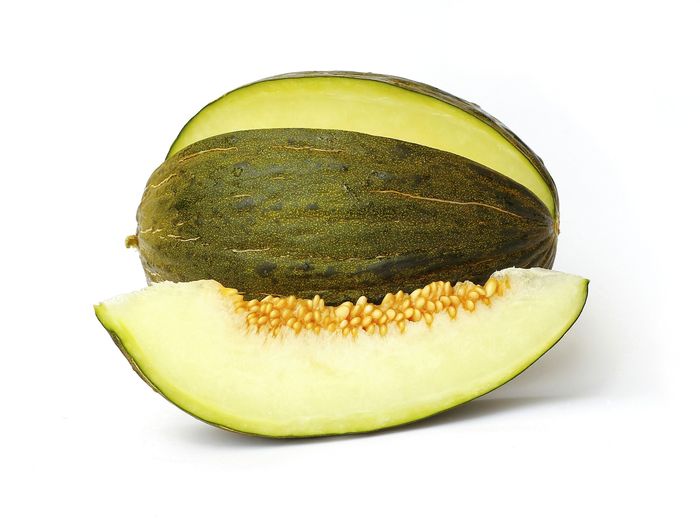Melon
The melon is the fruit of the melon plant, a plant that belongs to the Cucurbitaceae family, which includes over 850 species of herbaceous plants that produce big fruits protected by a hard shell. Species such as the cucumber (cucumis sativus) and the kiwano (cucumis metuliferus) belong to the genus Cucumis.
It’s in the summer months, from July to September, when the melons are harvested after checking they are completely ripe and they’ve developed their peculiar sweet taste and aroma. In winter months, from November to January, we can taste the tendril melon. Out of season they are imported from Brazil, Costa Rica and South Africa.
It’s best to buy those melons whose shell is hard and don´t have scratches or marks, with a regular grey line. The ones with a very green skin have been harvested before time. When they are ripe they have a characteristic sweet and delicate smell; if they have no fragrance they must be left to ripe at room temperature for some days.
To know if a melon is ripe, we have to grab it firmly. If it squishes a bit when we press it softly it’s ripe. Overripe melons may be sticky to the touch. If we can shake the melon a bit before buying it and we hear splashy sounds, it means that the melon is too ripe and it has started to deteriorate.
We must refuse to buy any fruit that looks too mushy, that has marks on it or moist stains on its skin. Stalks that look like they are starting to rot are a bad sign too.
-
Type of dish
- Beers
- Cocktails
- Breakfasts and brunch
- Burguers
- Juices, milkshakes and beverages
- Shellfish
- Bread and pastries
- Pizzas, patty
- Dessert
- Pasta
- Sándwich
- Pastries
- Finger foods
- Ice creams and sorbets
- Legumes
- Salads
- Eggs
- Patty
- liqueur
- Harvard plate
- Main course
- Meats
- Fish
- Birds
- Vegetables
- Soups and creams
- Rices
- Coffee, chocolate and infusion
- Cheeses
- Appetizers and canapes
- Temperature
- Cuisine type
- Additional culinary preparation
- Conservation technique
- Seasonal recipes
-
- Aromatic herbs
- Beverages
- Big game hunt
- Bread and pastries
- Canned goods and pickles
- Cereals
- Condiments, spices and additives
- Cooked, salted, preserved and cold meats
- Dried fruits and nuts
- Dry pulses
- Edible oils and vinegars
- Eggs and derivatives
- Feathered game hunt
- Fish cuts
- Fishes
- Insects
- Kitchen and bakery tecniques
- Kitchen and bakery utensils
- Meat cuts
- Meats
- Milk, cream and derivatives
- Mushrooms
- Offal
- Pasta, rice, flour and derivatives
- Poultry
- Seafood
- Service techniques
- Service utensils
- Vegetables cuts
- Vegetables, fruits, tubers and seaweed

